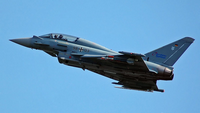In what was described as a major milestone in the six-nation Multirole Medium Combat Aircraft (MMRCA) tender, the Indian Ministry of Defense announced the final contenders for the $10 billion, 126-plane purchase in April. Only the Dassault Rafale and the Eurofighter Typhoon were left in the fray, while Boeing's F-18 E/F Superhornet, Lockheed Martin's F-16, Saab's Gripen and UAC's MiG-35 were all eliminated. The selection of aircraft offered only by European manufacturers has been seen by many U.S. commentators as a political snub to the Indo-U.S. strategic partnership, despite the Indian government's great efforts to frame the decision as a purely technical one taken by the Indian air force (IAF). In reality, the Indian decision reflects the fact that, in this particular case, Europe offers a superior value proposition than the United States.
Ever since the start of the MMRCA competition, several American thinks tanks have portrayed a potential U.S. win as the culmination of the Indo-U.S. strategic relationship that began under the Bush administration. Success for U.S. manufacturers was to herald a new era in trust and cooperation between the world's two largest democracies, while simultaneously bringing much-needed jobs to recession-hit America and giving India access to leading U.S. defense technology.
The Indians did not see it in these terms, however. The MMRCA competition was crafted with the intention of both adding modern teeth to the IAF's declining squadron strength and securing contemporary technology via an industrial partnership that would provide a much-needed impetus to India's emerging aerospace industry. The favored vendor would be the one who offered the best package with these broad criteria in mind. Simply put, these were the most "strategic" considerations for an India that has to factor in an unlikely yet possible joint attack by Pakistan and a furiously modernizing China.

